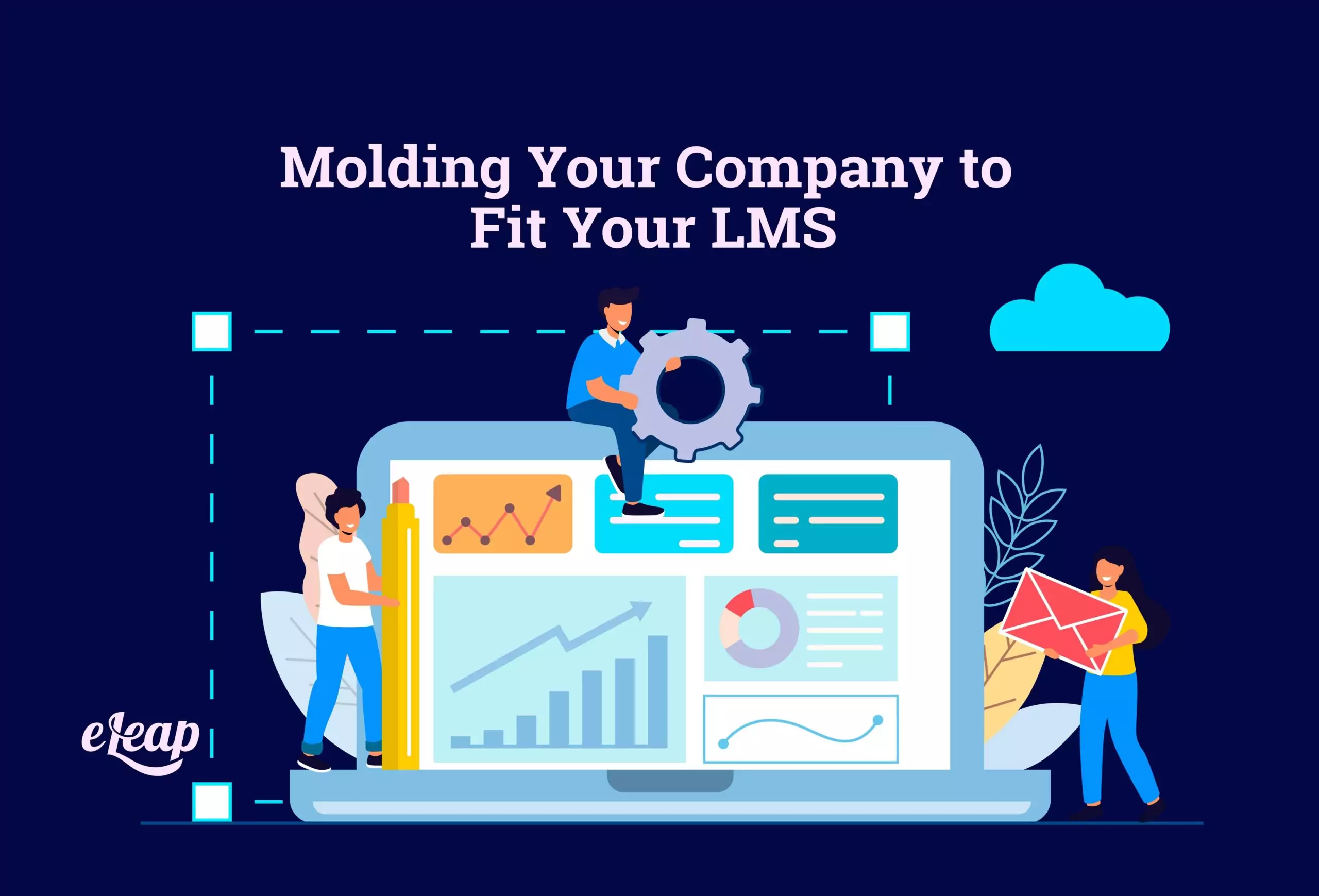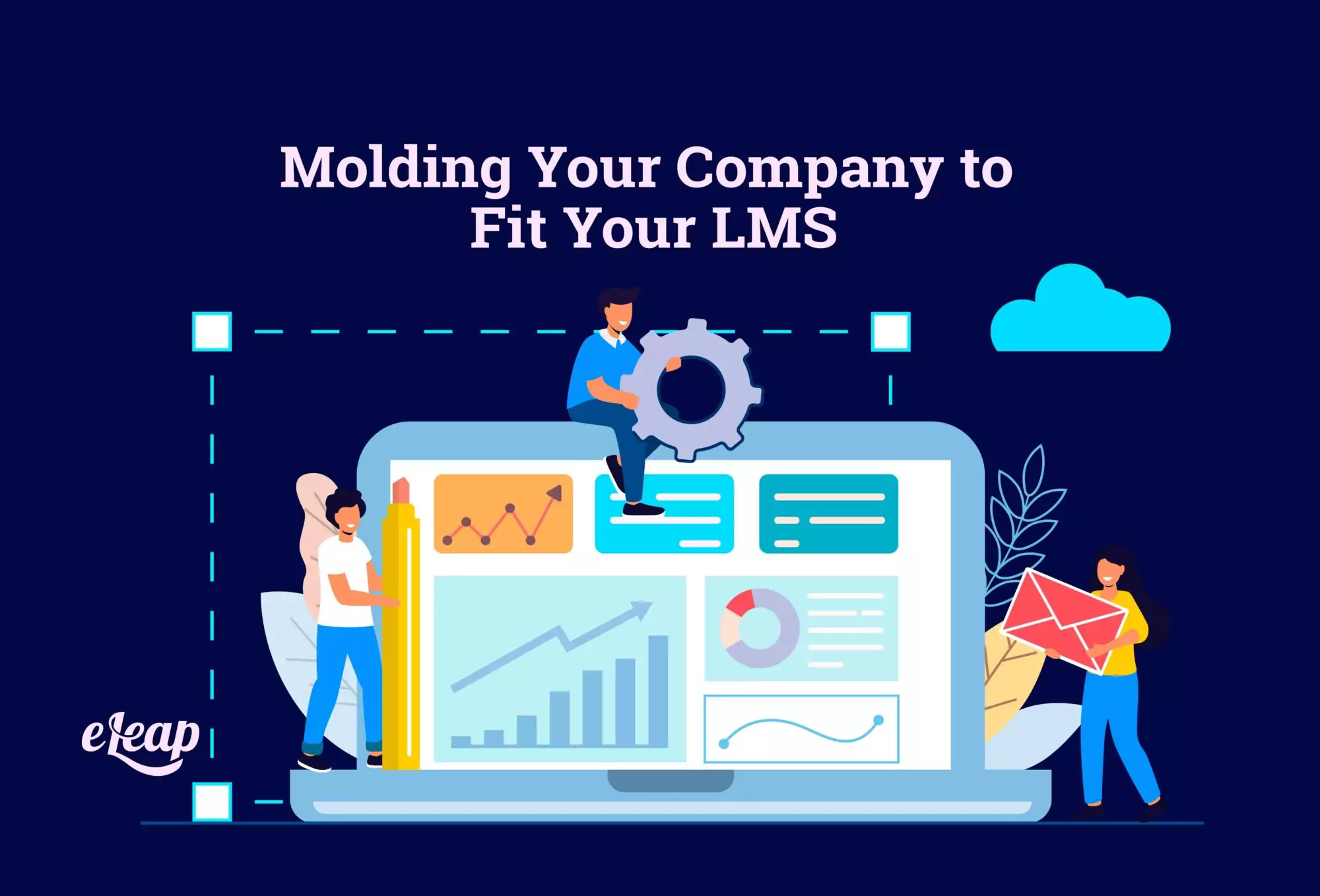Molding Your Company to Fit Your LMS

Purchasing learning management system software is a huge investment for any organization. Many different vendors exist, and finding the best software to fit our company can be challenging.
Maybe you got offered software that was supposed to be groundbreaking, and you found out it wasn’t what the company promised. Or, perhaps you just bought generic software and decided to mold your company to fit the LMS.
Regardless of the situation, it’s critical that your LMS fits your company and vice-versa. If you’re lucky, you didn’t purchase any software until you asked yourself some of the following questions and took the time to find the best fit.
In the following section, we’ll show you how to make sure your company fits your LMS and how you can get the most efficient training out of your software.

Define Your Objectives
If you don’t start with objectives, then how can you expect to achieve them? It’s as simple as defining what success looks like for your business.
If we’re talking about training, this will be different than hiring a consultant because consultants are hired for their expertise, whereas trainers are generally expected to deliver results. So first things first – figure out exactly what you want so you can measure whether or not you made progress toward achieving your goal(s).
This may sound obvious, but most people spend more time thinking about what they DON’T want rather than what they DO want. For example, let’s say your objective is to reduce training costs by $50 per hire. Many businesses focus on reducing labor hours instead of decreasing direct expenses.
If you’re doing this type of planning properly, you should also consider opportunities such as outsourcing, automation, or other ways to increase efficiency.
Choose An Appropriate Platform And Technology
There are two major considerations here-the platform and technology used by employees and clients. First, the platform determines which tools you’ll use within your LMS.
There are dozens of learning management systems available on the market today. Each has its pros and cons, so decide based on your needs and resources.
Next, determine what technologies your employees prefer-is it PowerPoint, video conferencing, or some form of social media integration? These decisions must fit into the overall theme of the courseware being delivered and the desired outcomes.
Determine Who Will Use The Program
Who will actually participate in the training? Is it management-based? Or maybe you want to include salespeople, too, since they play such important roles in revenue generation? Or perhaps only certain departments will take advantage of the programs.
Whatever the case may be, you’ll want to keep everyone updated throughout the entire process. Take the time to plan accordingly and map out the logistics of how participants will access the material. Also, think through how much content you’ll require and schedule delivery dates.
Design A Content Strategy That Works With Employees
It takes effort to design courses that both engage your audience and meet your specific requirements. Since you already understand your industry and competitors, you’ll probably know better than anyone else where best practices lie.
However, remember to keep in mind the end-users and their preferences when creating content. Sometimes simply taking a few extra minutes up front to survey employees might give you enough information to refine your approach.
Create A Course Calendar To Support Organizational Growth
As you grow and add additional products or services, you’ll find yourself needing to update course materials. Don’t wait until everything is finalized to realize that changes were necessary.
Instead, create a course calendar months in advance and stick to it! Having a well-organized course library makes life easier for instructors and administrators alike. This way, you won’t necessarily run short on ideas, and the finished product doesn’t get delayed due to lack of preparation.
Build In Flexibility Into Your Schedule
Most organizations offer multiple versions of their offerings. Some companies sell packages with several modules bundled up, while others provide each module separately.
Either way, flexibility is vital when scheduling classes and events. Depending on the size of your staff and the number of locations, group events may work better than individual ones.
Additionally, if you anticipate high attendance levels during peak times, try moving class times around slightly to avoid conflicts. Another option would be to move non-peak days forward to accommodate demand. When possible, always attempt to maximize participation rates.
Keep Track Of Feedback From Instructors & Participants
One valuable source of feedback comes directly from teachers/instructors. But how does someone respond to questions without having easy access to the answers?
One solution would be to post questions online for students to answer anonymously. Alternatively, you could opt for mobile apps or even integrate social networking sites into the mix.
As long as you have a method to collect data easily, feedback becomes infinitely more useful. On top of making improvements, you’ll gain insight into areas where modifications are needed.
Measure Results & Refine Lessons Learned
Measuring performance and measuring ROI aren’t mutually exclusive concepts. After all, if something works, why change it?
Yet, often companies fail to gather sufficient evidence regarding effectiveness. Before investing thousands of dollars into developing training programs, track metrics to validate the return on investment. Once you’ve established baseline measurements, compare subsequent years against historical trends to help identify growth patterns. At the very least, you should aim to improve your scores every year.
Develop A Culture Where Training Programs Are Proactively Planned
Training budgets are frequently reduced over time. Why? Because the budget didn’t perform according to expectations. Unfortunately, many solutions fall victim to the “chicken little” syndrome; i.e., “if we hadn’t done anything last year, we’d still be okay.”
While it’s true that past actions impact future possibilities, they shouldn’t dictate present realities. Unless training budgets shrink, eventually, they’ll stop shrinking altogether.
What happens next depends largely on how proactive your team is when evaluating the status quo. Start by asking yourselves tough questions about what went wrong and brainstorming potential remedies. Then set forth plans to correct problems early and proactively manage future risks.
Getting your company to mold to your LMS isn’t difficult; it just requires the right steps and participation. Using the steps described in this article will give you the best shot at getting maximum ROI from your LMS. Take advantage of online learning and the right LMS platform to start having greater production and an overall increase in the quality of your organization.